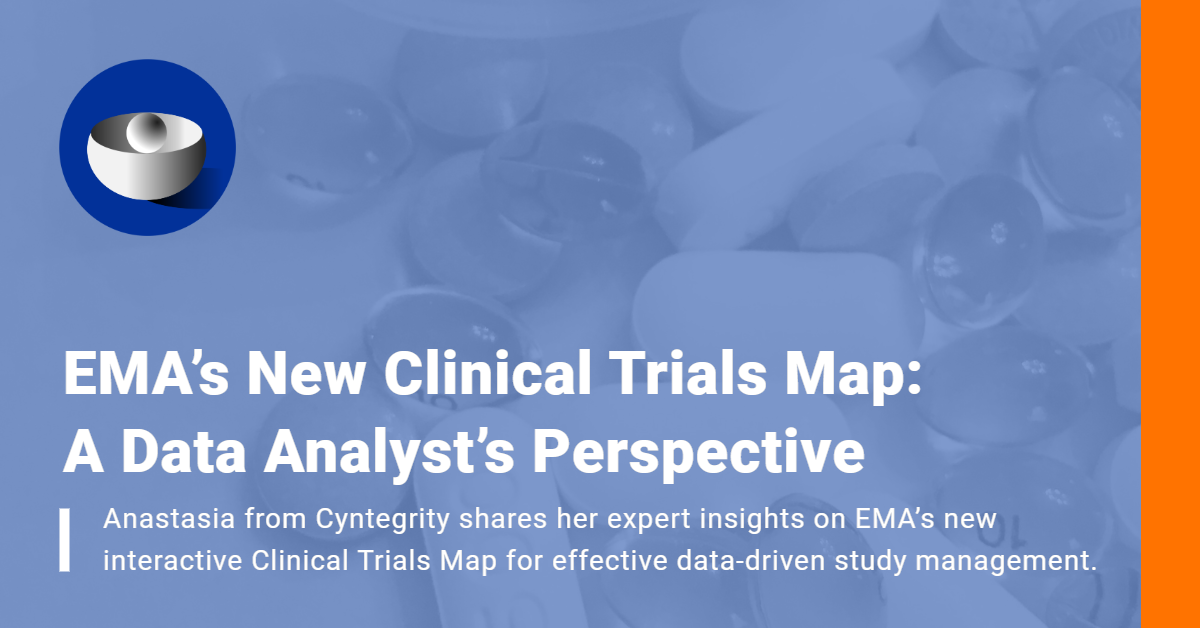Getting the Risk-Based Process Started in 4 Steps
Do you find the prospect of Risk Analysis and Risk-Based Quality Management (RBQM) to be a daunting prospect? Then bear with me. I shall help you simplify and demystify the process by using an example to illustrate the key steps to consider for the first part of the process; identifying risks, Key Risk Indicators, thresholds, and Quality Tolerance Limits.
Adverse Event (AE) reporting is a critical part of clinical research in terms of participant safety and data quality. Some form of safety assessment should be a primary endpoint in any clinical trial, and therefore AE reporting seems a good choice for this exercise. The examples I give below are not intended to be exhaustive; they are provided for illustrative purposes only.
ICH E8(R1) describes "Signal Detection and Safety Reporting" as the Critical to Quality Factors in Adverse Event reporting.
Step 1 – Critical to Quality Factors
The first step in any risk-based process should be to identify the Critical to Quality (CtQ) factors along with the critical data and processes for the trial. The draft version of ICH E8(R1) describes "Signal Detection and Safety Reporting" as the Critical to Quality Factors in Adverse Event reporting. So, when identifying the CtQ factors, there are two aspects you need to consider here:
- The sponsor's responsibility for an ongoing safety review of the product – signal detection
- The requirements and risks in relation to AE reporting
Now, what are the critical data and processes concerning reporting and signal detection? I would suggest the following as a starting point:
| CRITICAL DATA | CRITICAL PROCESSES |
|---|---|
| Adverse Event (AE) reports |
|
| Serious Adverse Event (SAE) reports |
|
| Attributability of Adverse Events |
|
| Expectedness assessment |
|
| Suspected Unexpected Serious Adverse Reaction (SUSAR) reports |
|
|
|
|
|
|
Step 2 – Risks
Based on the table above, you then need to identify the risks at an organizational, trial, and site level to establish the Quality Tolerance Limits (QTLs) and the Key Risk Indicators (KRIs).
| CRITICAL DATA/PROCESS | RISKS |
|---|---|
| Adverse Event Reports |
|
| SAE reports |
|
| Attributability Assessment |
|
| Expectedness Assessment |
|
| SUSAR reports |
|
| Signal detection and escalation |
|
| Safety Review – Risk/Benefit Assessment |
|
| Annual Report |
|
Followed by an evaluation of the risks based on their likelihood, impact, and detectability, so that you can give a risk category for each one. You can use tools available for this process, such as Cyntegrity's MyRBQM® Portal, which will provide a score for each risk. Those risks with high scores are then the ones to focus on regarding Key Risk Indicators along with risk management and mitigation plans.
Step 3 – Key Risk Indicators
For each of the risks identified, the next step is to establish the KRIs and Thresholds – the metrics used to monitor the risks and the thresholds which should initiate action. The exact metrics will depend on your product and therapeutic area and should be established by statistical methods using available data and information – the examples below are for illustrative purposes only.
As my example here, I will take the first area – AE reporting.
| RISK | KRI EXAMPLE | THRESHOLD EXAMPLE |
|---|---|---|
| Events misreported e.g., AEs reported instead of SAEs | Data queries raised on AE “diagnosis” field | Data query raised on more than 10% of AE diagnosis fields |
| Too many AEs reported | Number of AEs reported | More than 2 events per participant |
| Too few AEs reported | Number of AEs reported | Less than 1 event per 5 participants |
| [Thresholds could be set at trial, country, or site level] |
Here the number of AEs reported would be an example of a two-sided KRI – it can be too high or too low. Too high might indicate a problem with the product; too low might suggest that investigators are failing to report all adverse events. There may also be geographical differences in AE reporting because of physiological or cultural differences, so you may need to consider this.
Step 4 – Quality Tolerance Limit
Lastly, establish the QTLs at an organizational or trial level. As per our recent article on the top 7 QTLs, I would recommend only one QTL for this area, for example, the number of cases of Adverse Events or Serious Adverse Events of special interest. The specifics of this will depend on your product and therapeutic area, and the parameter used to measure this is likely to be a percentage or number of participants who report the specific AEs or SAEs in question.
Break the Complex Down to Simple
My approach above is a simplified outline of the first part of implementing Risk Based Quality Management. Although the process is complex and technical, you can break it down into simple steps, and once the first round of risk assessment is done, you can carry much of the work forward into the next iteration, which means that each time you do a Risk-Based Quality Management Plan, it becomes easier.






